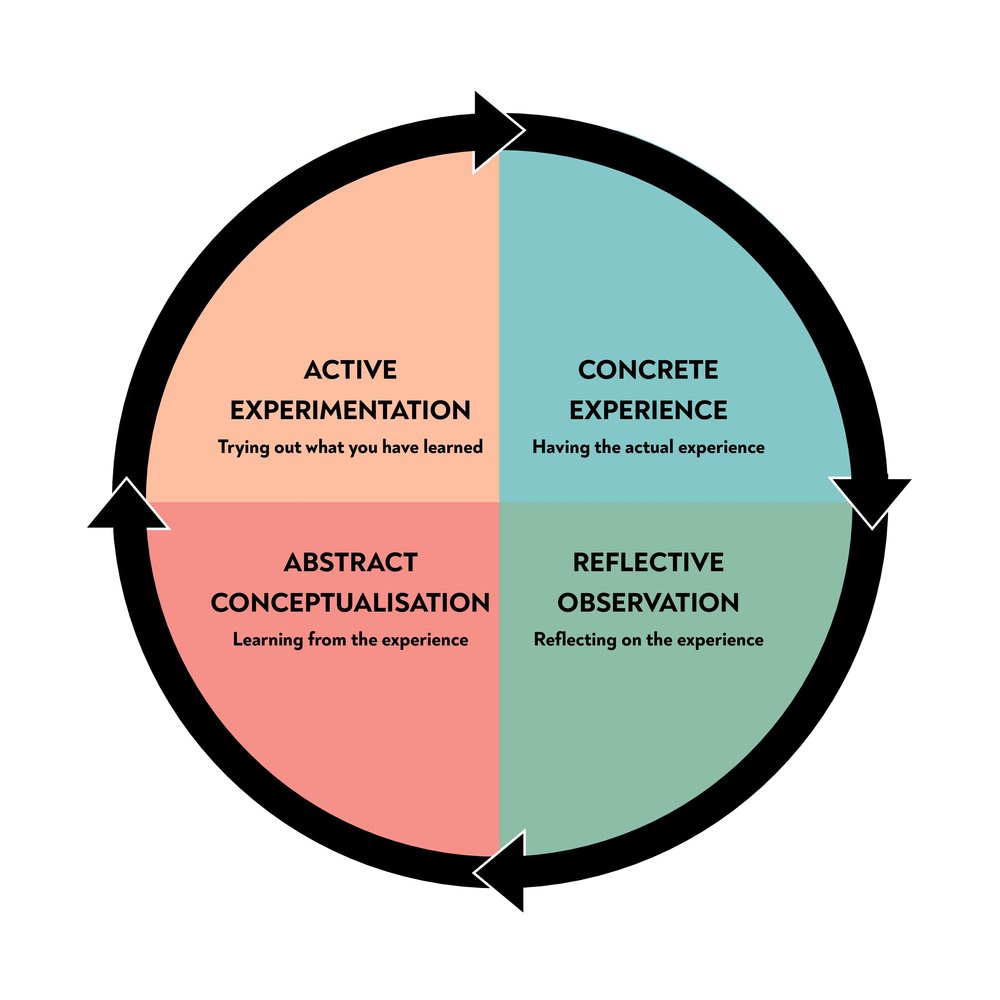Applying David Kolb's Experiential Learning Theory in Personal Training: A Guide to Engaging Workouts
David Kolb's model of experiential learning identifies four different learning styles: concrete experience, reflective observation, abstract conceptualization, and active experimentation. These learning styles describe how individuals process and make sense of new information and experiences.
In the concrete experience style, individuals learn best through hands-on, practical experience. They prefer to learn by doing and may struggle with abstract or theoretical concepts. On the other hand, the reflective observation style involves learning through observing and reflecting on experiences and new information. Individuals with this learning style prefer to take a step back and think about their experiences and how they can apply them in the future. Meanwhile, the abstract conceptualization style involves learning through abstract ideas and concepts. These individuals prefer to analyze and consider theoretical explanations and may struggle with hands-on, practical tasks. Finally, the active experimentation style involves learning through trying out new ideas and concepts in a hands-on way. These individuals prefer to take an active, participatory approach to learning.
How does Kolb's learning styles model relate to personal training? Personal trainers need to understand the learning styles of their clients and adjust their training methods accordingly. For example, someone who prefers concrete experience may benefit from a training program that emphasizes hands-on, practical exercises and drills. On the other hand, someone who prefers abstract conceptualization may benefit from a program that includes more discussion and analysis of technique and strategy. By understanding the unique needs and goals of their clients, trainers can create a more personalized and effective training experience.
In addition to considering learning styles, trainers can also take into account the individual goals and motivations of their clients. Some clients may be more interested in improving their overall fitness and physical conditioning, while others may be more focused on learning and mastering specific boxing techniques. By understanding the unique needs and goals of their clients, trainers can create a more personalized and effective training experience.
Using David Kolb's Experiential Learning Theory, personal trainers can apply the following techniques:
Assessment: Conducting regular assessments to gather information about the client's fitness level, abilities, and goals.
Workout design: Creating workout plans that are tailored to the client's individual needs and abilities, taking into account the results of the assessments.
Supervision: Observing and guiding the client during their workout to ensure proper form and technique, as well as to provide feedback and encouragement.
Reflection: Encouraging the client to reflect on their workout experiences and identify areas for improvement.
Conceptualization: Discussing the client's observations and helping them turn their reflections into more general concepts and theories about their fitness journey.
Experimentation: Working with the client to test the concepts developed in the previous stage through experimentation in their next workout.
Safety considerations: Making sure that the concrete experiences provided to the client are safe and appropriate for their abilities and fitness levels.
Continuous improvement: Repeating the cycle of concrete experiences, reflective observation, abstract conceptualization, and active experimentation to continually improve the client's fitness routine and reach their goals.
In conclusion, understanding the learning styles of clients and applying David Kolb's Experiential Learning Theory in personal training can help personal trainers create a dynamic, engaging, and personalized training experience. This can lead to better results and satisfaction for their clients and help them reach their fitness and training goals. By providing a safe and supportive learning environment and incorporating a variety of learning techniques, personal trainers can help clients develop a deeper understanding of their fitness journey and progress towards their goals.

